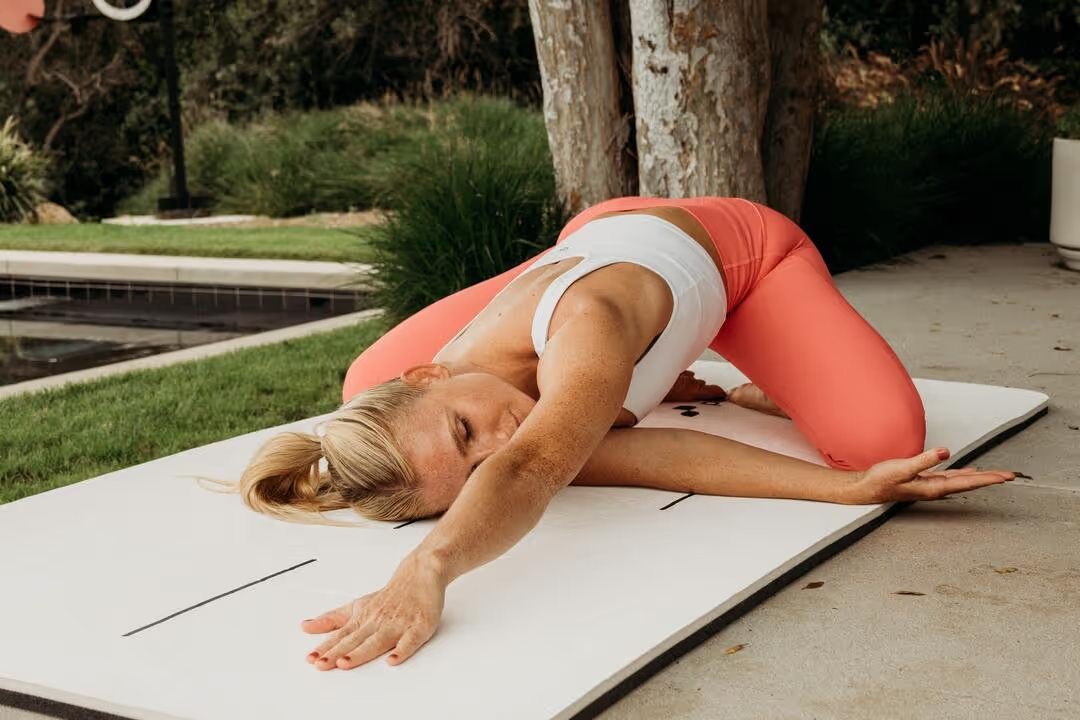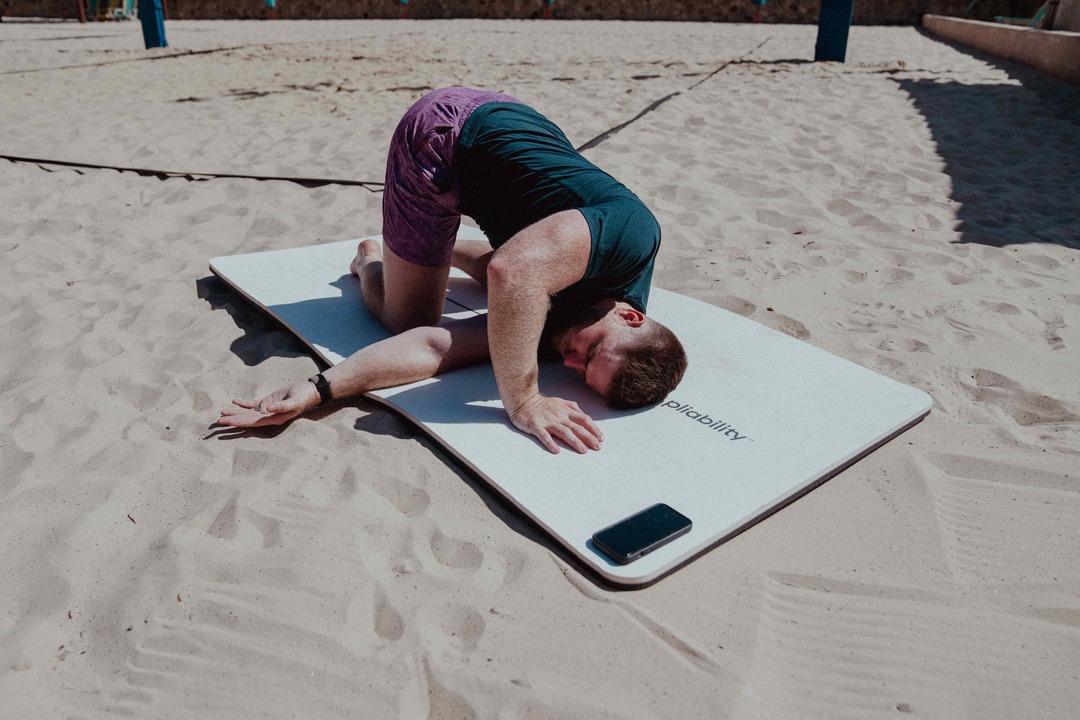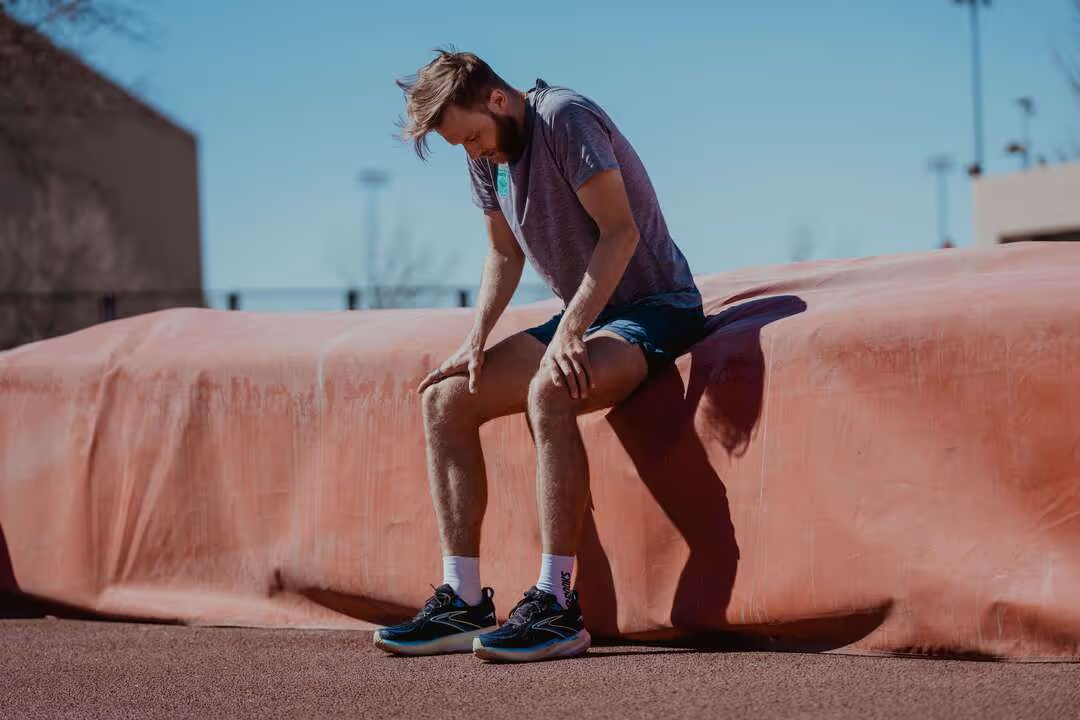After an intense workout, have you ever thought, “Wow, this feels harder than it used to,” or “What happened to my recovery time? I used to be able to bounce back from these workouts in no time.” If so, you’re not alone. As we get older, our muscle recovery time tends to slow down, making it more challenging to get back on track after strenuous workouts. Fortunately, incorporating the best recovery tools for athletes, such as foam rollers, compression gear, and percussive therapy devices—can significantly enhance recovery and reduce muscle soreness. This blog will help you understand how muscle recovery time changes by age and how to optimize recovery, so you can build muscle while shedding fat efficiently, see noticeable progress faster, and improve your body composition with innovative, sustainable strategies.
One helpful tool to have in your arsenal is Pliability’s mobility app. The app provides targeted routines to help you recover faster after workouts and keep your muscles pliable and resilient to stay on track with your training goals.
An Overview of Muscle Recovery Time By Age

Muscle recovery time varies with age due to physiological changes that affect:
- Muscle health
- Recovery capabilities
- Overall function
Understanding how recovery times differ across age groups can help you better prepare for exercising as you age.
Teens and Young Adults: Recovery in Full Swing
Muscle recovery is at its peak during the teenage years and early adulthood. Recovery times are typically short, ranging from 24 to 48 hours for intense physical activity. Not only do teens and young adults have healthy muscle tissue and ample muscle fibers, but they also benefit from robust levels of hormones that support muscle repair and growth, including:
- Testosterone
- Growth hormone
Middle-Aged Adults: Recovery Takes Longer
As you enter your 40s and 50s, recovery begins to slow. Decreased levels of hormones like testosterone and growth hormone contribute to a longer repair process. Recovery times can extend to 48-72 hours, especially after intense exercise.
Older Adults: A Gentle Approach to Recovery
Recovery in your 60s and beyond takes even longer, often extending to 4-7 days, depending on the intensity of your workouts. Age-related muscle loss (sarcopenia), decreased circulation, and a reduced ability to repair tissues all play a role.
Related Reading
- What Is Active Recovery
- Why Is Recovery Important for Athletes
- Is Yoga Active Recovery
- Should You Be Sore After Every Workout
- Calves Sore After Running
- Which Muscles Recover the Fastest
- Why Are Ice Baths Good for Muscle Recovery
- What to Do on Recovery Days
- Why Is It Important to Include Recovery Time in a Workout Program?
- What to Drink for Muscle Recovery
Why Muscle Recovery Gets Harder With Age

As you age, you lose muscle fibers, which slows recovery after exercise. "During the aging process, we are losing the size of the muscle fibers as well as the number of muscle fibers [also known as sarcopenia]," Ellen Anderson, PT, PhD, associate professor in the department of rehabilitation and movement sciences at Rutgers School of Health Professions, tells LIVESTRONG.com.
Age-Related Muscle Decline
A 2021 study published in the journal Gerontology describes sarcopenia as the progressive loss of muscle mass and strength that occurs with aging. And while strength training is essential to slow down sarcopenia, your muscles still naturally change over the decades.
Impact on Muscle Growth Rate
The rate of change depends on your baseline activity level, meaning that if you've been exercising consistently, your muscles will change at a slower rate than those of a sedentary person, says Meagan Jozwiak, MD, a sports medicine physician at Northwestern Medicine Central DuPage Hospital.
Reduced Capacity and Recovery
Over time, as your muscles change, you may notice you can't handle the same load anymore or that you fatigue more quickly. "Trying to push yourself to do what you could do years ago is more and more taxing to the muscles themselves, so recovery tends to be longer," Dr. Jozwiak says.
Weakened Brain-Muscle Connection Affects Recovery
As you age, your brain and muscles don’t work together as efficiently, affecting muscle recovery. There are also changes to your neuromuscular system; your brain and muscles work together to help you perform exercises. This connection between your brain and muscles enables you to move weight more efficiently and effectively.
"If you're doing the workouts you've always done, but the size of your muscles is less and you have fewer muscle fibers and neuromuscular connections, you're really working hard on what you have left," Anderson says.
Aging Connective Tissues Slow Recovery
On top of all that, other structures and systems in the body change with age. Connective tissues, like tendons, blood vessels, tissues in the arteries, and tissues surrounding your joints, start to degrade as you naturally lose collagen and elastin (proteins in connective tissue) with age, Anderson says.
This compromises the vascular system, resulting in less blood flow to the skeletal muscles. Changes in the tendons, which attach muscles to bones, paired with changes in muscle structure often make the muscles feel tighter and sorer, Anderson says.
Delayed Healing Processes Mean Slower Recovery
Your body's healing processes slow as you age, which means prolonged recovery after exercise. The final reason: Older adults have a delayed inflammatory response, thanks to age-related changes to their immune system, Anderson says.
The Body's Healing Mechanism
When a part of your body experiences stress, your body's inflammatory response kicks in. The body sends more blood to the area to deliver white blood cells and other essential immune-system components to start the healing process.
"You don't want too much inflammation because then things are swollen, but you want just enough to help in the healing process," Anderson says. If this response is delayed, it may take longer for your muscles and tissues to get what they need to recover.
Related Reading
- Natural Muscle Recovery
- Is Sauna Good for Muscle Recovery
- Is Swimming Good for Recovery
- Benefits of Active Recovery
- How to Speed Up Muscle Recovery
- Active Recovery vs Rest Day
- Active vs Passive Recovery
- Recovery Methods for Athletes
- How to Speed Up Muscle Strain Recovery
6 Ways to Support Muscle Recovery as You Get Older

1. Fuel Up for Muscle Recovery
Nutrition is the foundation of muscle recovery, and focusing on the right foods before and after workouts can speed up recovery time. Consuming protein helps repair and rebuild muscle tissue, while carbohydrates replenish glycogen stores your body uses for energy. If you don’t eat an optimal combination of these macronutrients after exercise, it will take longer to recover from your workouts.
Maximizing Muscle Response
Paying attention to your daily protein intake is essential as you age. Research shows that muscle tissue becomes less responsive to protein as we age, but consuming more can help combat this change. Speaking with a dietitian can help determine how much protein is right for you.
2. Stay Hydrated to Recover Faster
Your body needs water to break down food and create energy. It also needs H2O to regulate temperature and maintain blood volume, which are essential for cardiovascular function. All of these things factor into how you feel and recover post-workout.
Older adults are also more susceptible to dehydration, so staying hydrated is essential. Ensure you drink enough water before, during, and after exercise.
3. Make Time to Stretch
After your workout, take time to stretch. Working on flexibility helps minimize stiffness, which increases with age. Stretching doesn’t necessarily mean you won’t be sore, but you’ll be able to deal with stiffness more effectively if you do some flexibility training after your workout.
Hold each stretch for at least 30 seconds. Focus on the areas you just worked and the areas you know tend to get stiff, like your lower back or hamstrings.
4. Get Enough Sleep for Recovery
Sleep is an underappreciated part of muscle recovery. According to the National Institutes of Health, deep sleep triggers the release of a hormone that boosts muscle mass and helps repair cells and tissues. As people get older, sleep can be more challenging, impacting many things, including recovery.
Sleep Deprivation
Lack of sleep can mess with your hormones, specifically boosting stress hormones. We start to see increased cortisol and epinephrine levels, and these hormones tend to inhibit muscle building. Chronic sleep deprivation can keep these hormones out of whack and mess with everything from your heart health to your ability to recover properly after a challenging workout.
5. Try Heat Therapy for Muscle Recovery
Treating your muscles to some post-workout heat, like from a hot tub or sauna, can help increase blood flow to your muscles. Increased blood flow helps remove waste products accumulated during exercise and transport nutrients and healing cells to the damaged muscles. Eating the right combo of carbs and proteins helps deliver nutrients to skeletal muscle:
- Repairs damaged muscles
- Replenishes glycogen
It gets there more quickly if there’s better blood flow.
6. Give Yourself More Time to Recover
Listen to your body. If your muscles are sore and tired, it’s not worth pushing through. “Pushing through soreness can cause more harm than good,” Dr. Jozwiak says.
Adding more recovery days to your routine might be the best solution. Just two days of strength training per week is enough to spark muscle growth and build strength, so don’t get discouraged if you need an extra day or two to recover and have to cut one of your planned workouts.
Improve Your Flexibility with Our Mobility App Today | Get 7 Days for Free on Any Platform
Pliability offers a fresh take on yoga tailored for performance-oriented individuals and athletes. Key features include:
- A vast library of high-quality videos designed to improve flexibility, aid recovery, reduce pain, and enhance range of motion.
- Daily updated custom mobility programs for optimizing their health and fitness.
- A unique body-scanning feature to pinpoint mobility issues
Whether you're limited by pain or movement restrictions, Pliability complements your fitness routine and helps you move better.
Sign up today for a 7-day free trial on iPhone, iPad, Android, or via our website to improve flexibility, aid recovery, reduce pain, and enhance range of motion with our mobility app.
Related Reading
- Which Magnesium Is Best for Muscle Recovery
- Hot or Cold Bath for Muscle Recovery
- Benefits of Massage Gun
- Foam Roller Benefits
- Chocolate Milk for Muscle Recovery
- How to Speed Up Muscle Strain Recovery in Back
- Causes of Poor Muscle Recovery
- Active Recovery Workout
- Active Recovery Stretches
- Best Recovery Tools for Runners
- Best Vitamins for Muscle Recovery
- Best Foods for Muscle Recovery
- Workout Recovery Tools



.jpg)
.jpg)
.jpeg)


